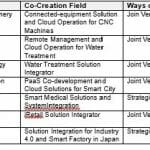~ Why context is king when collecting data ~
It’s no secret that data collection is important for generating valuable insight that helps plant managers improve efficiency in industrial systems. However, what seems unknown to many in the industry is the importance of understanding the context of the data being analysed. Here, George Walker, managing director of industrial control and automation provider Novotek UK and Ireland, explains why applying context to your data is the difference between insight and statistical blindness.
Tunnel vision is a problem across a variety of fields, from sports to industry. It is easy to get fixated on a single goal and to forget to take a step back for a wider view of a situation. Yet, taking this step back can provide invaluable insight and understanding of the reality of a situation.
Let’s take a hypothetical scenario. Imagine that a maintenance manager has a machine that is bending wires. These wires have to bend to a very accurate angle to properly work. However, the machine isn’t bending them properly at certain times of the day, causing the business to produce faulty goods that have to be discarded.
To fix this issue, the maintenance manager brings up the data collected by the device’s onboard software. The manager then analyses the data with a digital twinning platform. Looking at the analysis, it becomes apparent that the machine is vibrating anomalously at certain hours of the day. The manager dismantles the machine, reassembles it and even runs it in an isolated scenario, but is still unable to find the source of the problem.
In this instance, if the manager had taken a moment to take a step back and looked for context, they may have realised that the anomalous vibrations coincided with the activation period of a nearby piece of heavy machinery. There is nothing wrong with the machine in question, but its surrounding context reveals the cause of the error. This is why context in data collection is vital.
With an array of smart sensors and devices, paired with a digital twinning system like GE Digital’s Predix platform, across the whole production line, the manager could have clearly seen the correlation by viewing the data in context. Another method of achieving contextual understanding would have been by comparing the machine with other similar ones in different plants.
This shows why digital twinning is such a powerful tool. Being able to recreate an entire plant in a digital model breaks silo mentality. This allows managers to have holistic insight, which reveals issues that were previously not apparent. Whatever the issue, it is evident that context in data collection matters. Being able to analyse systems is now a reality and should be used to the full extent of its potential.
With potential to reduce waste and unnecessary expenditure, digital twins will allow stronger operations. With context being easily achievable in the modern industrial arena, it no longer needs to be a trade secret among industrial businesses. And by sharing this knowledge, more businesses can make their smart networks smarter, their operations more efficient and their production processes more productive.







